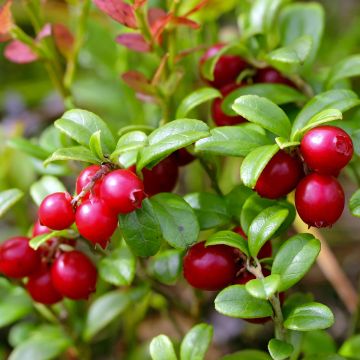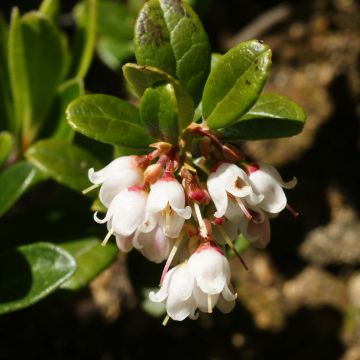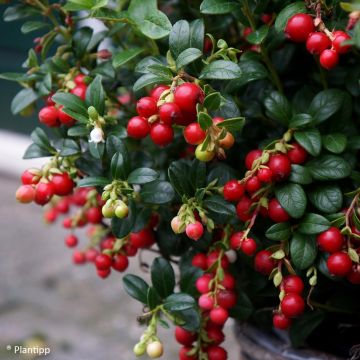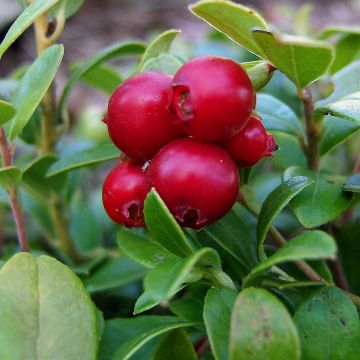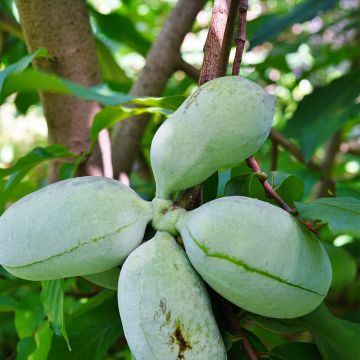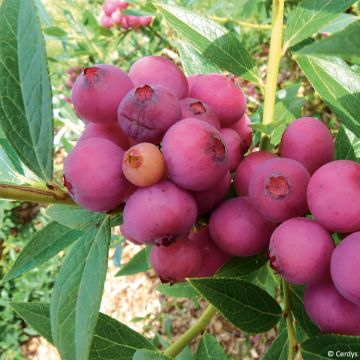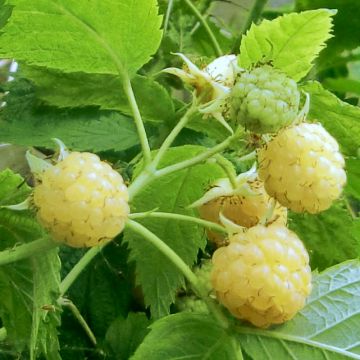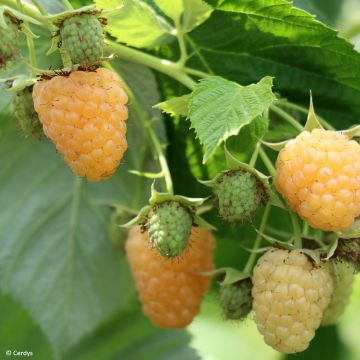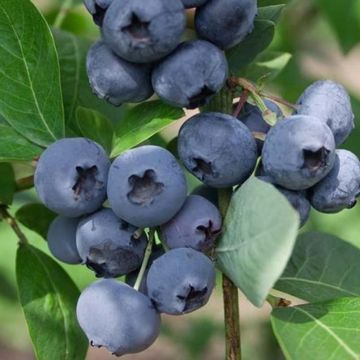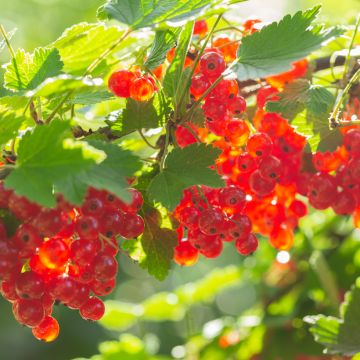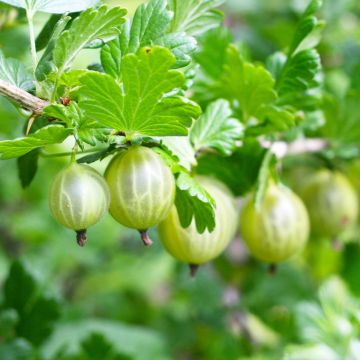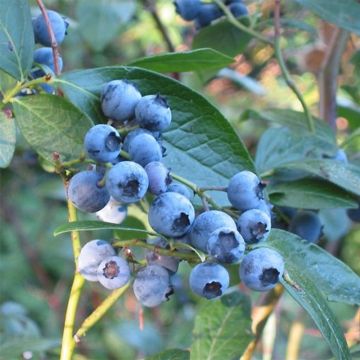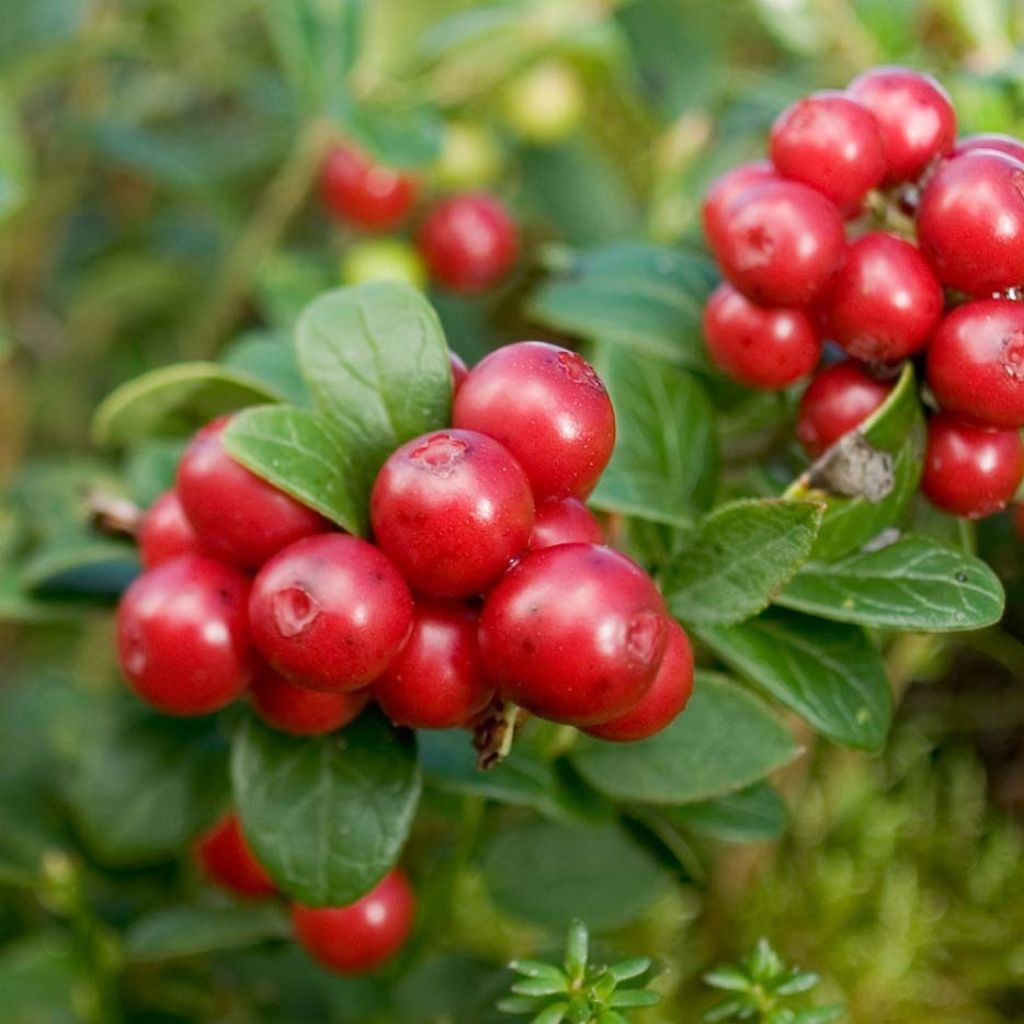

Airelle rouge Red Candy® - Vaccinum vitis-idaea
Vaccinum vitis-idaea Red Candy - Bilberry
Vaccinium vitis-idaea Red Candy®
Lingonberry, Cowberry
2 lovely young plants arrived in excellent condition, covered with tiny cranberries. Planted right away and pampered :-) I hope to see them thrive very soon.
Mireille , 21/03/2025
Special offer!
Receive a €20 voucher for any order over €90 (excluding delivery costs, credit notes, and plastic-free options)!
1- Add your favorite plants to your cart.
2- Once you have reached €90, confirm your order (you can even choose the delivery date!).
3- As soon as your order is shipped, you will receive an email containing your voucher code, valid for 3 months (90 days).
Your voucher is unique and can only be used once, for any order with a minimum value of €20, excluding delivery costs.
Can be combined with other current offers, non-divisible and non-refundable.
Home or relay delivery (depending on size and destination)
Schedule delivery date,
and select date in basket
This plant carries a 6 months recovery warranty
More information
We guarantee the quality of our plants for a full growing cycle, and will replace at our expense any plant that fails to recover under normal climatic and planting conditions.

Description
The Red Cranberry Red Candy (Vaccinium vitis-idaea) is a new variety that is highly productive, with generous and perpetual flowering, producing large and decorative fruits with a modest growth perfectly suited for small gardens and container cultivation. Renowned for their vitamin and antioxidant content, the tart-flavoured berries are mainly used to make juice, jellies, and jams, or to accompany game or saucy dishes. The creeping bush has evergreen foliage reminiscent of boxwood and clusters of small white-pink flowers. This very hardy, lovely ground cover is easily grown in an acidic, moist but well-drained soil in partial shade.
The cranberry belongs to the Ericaceae family, just like blueberries, heathers, and rhododendrons. The red cranberry, known as Vaccinium vitis-idaea in Latin, also called the mountain cranberry, grows naturally in acidic and peaty soils in wooded areas of mountainous regions in northern Europe, North America, and even in Antarctica. It is a slow-growing bush that is extremely cold-resistant, with evergreen foliage and a low and spreading habit, spreading through underground rhizomes.
The 'Red Candy' cultivar reaches an average height of 20cm (8in), with a spread of 75 cm (30in). The leaves are oval, leathery, glossy, 1 to 3cm (0 to 1in) long, dark green on the upper surface, and covered with small brown glands on the underside. They are dense and abundant and form a decorative foliage that remains attractive even in winter. The flowering occurs first in May-June on the previous year's wood, and then again in July-August on the current year's shoots with small bell-shaped flowers, 5 to 7mm (0in) long, tinged with pink on a white-cream background, clustered at the tips of the stems. These flowers are very popular with bees and followed by round, 1 to 1.5cm (0 to 1in) in diameter, shiny berries, bright red-pink when ripe, and highly decorative. Harvesting takes place in two stages: first in early summer, then again in September-October. This Red Candy variety is self-fertile, one plant is sufficient for a bountiful harvest.
The cranberry is mainly consumed in Northern European and American countries, and is an ornamental, medicinal, and edible plant. Its tart fruit is low in calories but highly nutritious: it is rich in vitamins A, B, and C, minerals, and antioxidants. It can be eaten freshly picked, as juice, jam, jelly, sorbet, as a garnish for game, in sauces, or to flavour certain liqueurs and wine. Cranberries can be stored for about ten days after picking and can be frozen for longer preservation. In the garden, Vaccinium vitis-idaea Red Candy will fit well in semi-shaded areas, on the edge of woodlands, in orchards, or along an east-facing wall, where it will form a beautiful ground cover. This small bush will integrate perfectly into acid soil beds, alongside rhododendrons, azaleas, hydrangeas, andromedas, heathers, and Mayberry. It can also be planted in a pretty pot on the terrace or balcony, where it will offer its abundant fruiting within reach: remember to water it regularly with non-chalky water and regularly fertilise your cranberry.
Report an error about the product description
Vaccinum vitis-idaea Red Candy - Bilberry in pictures
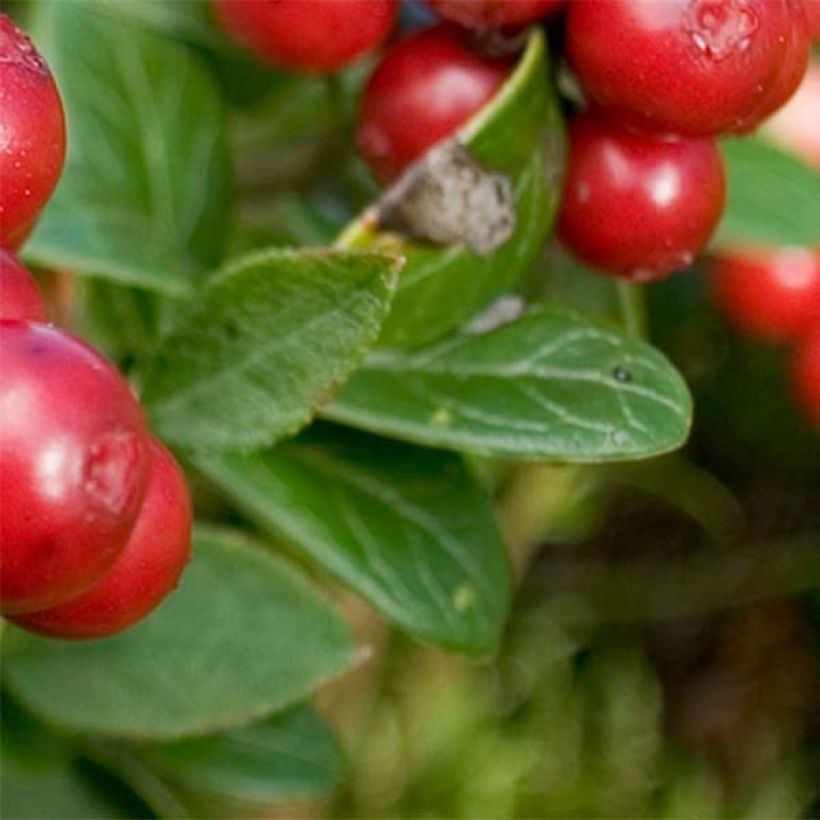

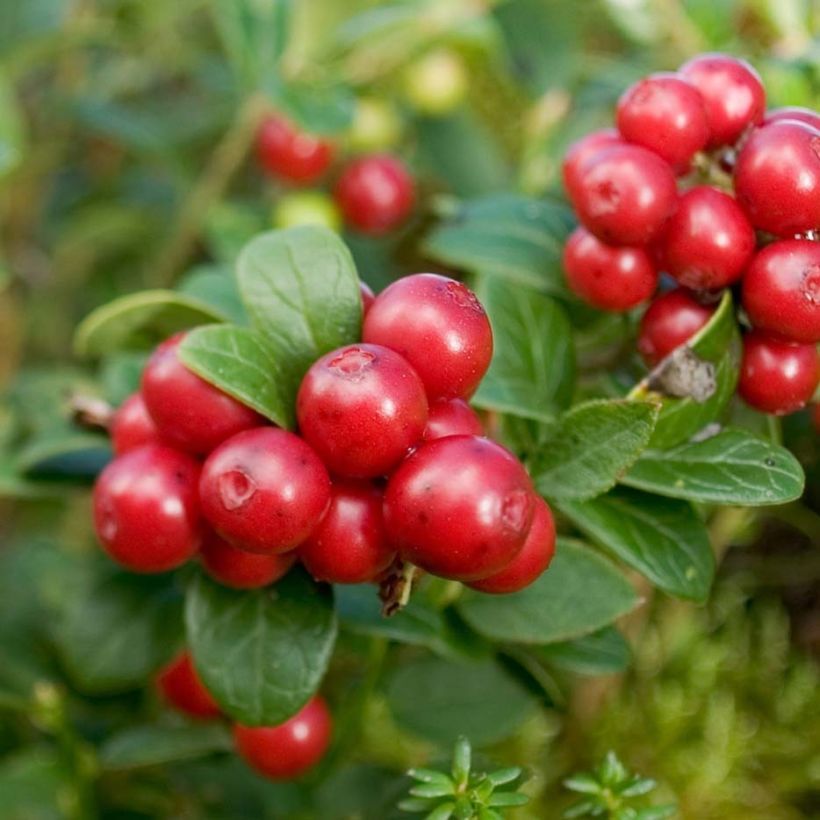

Plant habit
Fruit
Flowering
Foliage
Botanical data
Vaccinium
vitis-idaea
Red Candy®
Ericaceae
Lingonberry, Cowberry
Cultivar or hybrid
Other Cranberries
View all →Planting and care
Plant the cranberry ideally in autumn or any time of the year when there is no frost. This bush should be planted in partial shade, along the edge of a woodland, in open woodland, or an east-facing position without scorching sun. It is very hardy (-30°C (-22°F)) and will grow without difficulty if the soil and exposure are suitable.
Plant it in a very acid soil (pH between 4 and 6), incorporating ericaceous soil or in a mixture of ordinary soil and organic matter, well-decomposed bark compost. The collar should be level with the ground. Firmly pack the soil and water abundantly with non-alkaline water. In slightly chalky to neutral soil, dig a hole 50 to 60 cm (20 to 24in) deep, line the edges with a garden felt, then fill with a mixture of compost and ericaceous soil. The cranberry tolerates soils occasionally waterlogged, for example on the banks of water features.
The soil should remain moist to wet. If watering is necessary, use non-alkaline and non-chlorinated water (e.g. rainwater). Mulch the base with shredded bark, straw, or fern leaves. It is sometimes useful to place a protective net if birds become too greedy during harvest. In spring, annually add a little well-rotted compost on the surface. The cranberry is not very susceptible to diseases and pests.
Planting period
Intended location
Care
-
, onOrder confirmed
Reply from on Promesse de fleurs
Similar products
Haven't found what you were looking for?
Hardiness is the lowest winter temperature a plant can endure without suffering serious damage or even dying. However, hardiness is affected by location (a sheltered area, such as a patio), protection (winter cover) and soil type (hardiness is improved by well-drained soil).

Photo Sharing Terms & Conditions
In order to encourage gardeners to interact and share their experiences, Promesse de fleurs offers various media enabling content to be uploaded onto its Site - in particular via the ‘Photo sharing’ module.
The User agrees to refrain from:
- Posting any content that is illegal, prejudicial, insulting, racist, inciteful to hatred, revisionist, contrary to public decency, that infringes on privacy or on the privacy rights of third parties, in particular the publicity rights of persons and goods, intellectual property rights, or the right to privacy.
- Submitting content on behalf of a third party;
- Impersonate the identity of a third party and/or publish any personal information about a third party;
In general, the User undertakes to refrain from any unethical behaviour.
All Content (in particular text, comments, files, images, photos, videos, creative works, etc.), which may be subject to property or intellectual property rights, image or other private rights, shall remain the property of the User, subject to the limited rights granted by the terms of the licence granted by Promesse de fleurs as stated below. Users are at liberty to publish or not to publish such Content on the Site, notably via the ‘Photo Sharing’ facility, and accept that this Content shall be made public and freely accessible, notably on the Internet.
Users further acknowledge, undertake to have ,and guarantee that they hold all necessary rights and permissions to publish such material on the Site, in particular with regard to the legislation in force pertaining to any privacy, property, intellectual property, image, or contractual rights, or rights of any other nature. By publishing such Content on the Site, Users acknowledge accepting full liability as publishers of the Content within the meaning of the law, and grant Promesse de fleurs, free of charge, an inclusive, worldwide licence for the said Content for the entire duration of its publication, including all reproduction, representation, up/downloading, displaying, performing, transmission, and storage rights.
Users also grant permission for their name to be linked to the Content and accept that this link may not always be made available.
By engaging in posting material, Users consent to their Content becoming automatically accessible on the Internet, in particular on other sites and/or blogs and/or web pages of the Promesse de fleurs site, including in particular social pages and the Promesse de fleurs catalogue.
Users may secure the removal of entrusted content free of charge by issuing a simple request via our contact form.
The flowering period indicated on our website applies to countries and regions located in USDA zone 8 (France, the United Kingdom, Ireland, the Netherlands, etc.)
It will vary according to where you live:
- In zones 9 to 10 (Italy, Spain, Greece, etc.), flowering will occur about 2 to 4 weeks earlier.
- In zones 6 to 7 (Germany, Poland, Slovenia, and lower mountainous regions), flowering will be delayed by 2 to 3 weeks.
- In zone 5 (Central Europe, Scandinavia), blooming will be delayed by 3 to 5 weeks.
In temperate climates, pruning of spring-flowering shrubs (forsythia, spireas, etc.) should be done just after flowering.
Pruning of summer-flowering shrubs (Indian Lilac, Perovskia, etc.) can be done in winter or spring.
In cold regions as well as with frost-sensitive plants, avoid pruning too early when severe frosts may still occur.
The planting period indicated on our website applies to countries and regions located in USDA zone 8 (France, United Kingdom, Ireland, Netherlands).
It will vary according to where you live:
- In Mediterranean zones (Marseille, Madrid, Milan, etc.), autumn and winter are the best planting periods.
- In continental zones (Strasbourg, Munich, Vienna, etc.), delay planting by 2 to 3 weeks in spring and bring it forward by 2 to 4 weeks in autumn.
- In mountainous regions (the Alps, Pyrenees, Carpathians, etc.), it is best to plant in late spring (May-June) or late summer (August-September).
The harvesting period indicated on our website applies to countries and regions in USDA zone 8 (France, England, Ireland, the Netherlands).
In colder areas (Scandinavia, Poland, Austria...) fruit and vegetable harvests are likely to be delayed by 3-4 weeks.
In warmer areas (Italy, Spain, Greece, etc.), harvesting will probably take place earlier, depending on weather conditions.
The sowing periods indicated on our website apply to countries and regions within USDA Zone 8 (France, UK, Ireland, Netherlands).
In colder areas (Scandinavia, Poland, Austria...), delay any outdoor sowing by 3-4 weeks, or sow under glass.
In warmer climes (Italy, Spain, Greece, etc.), bring outdoor sowing forward by a few weeks.






























